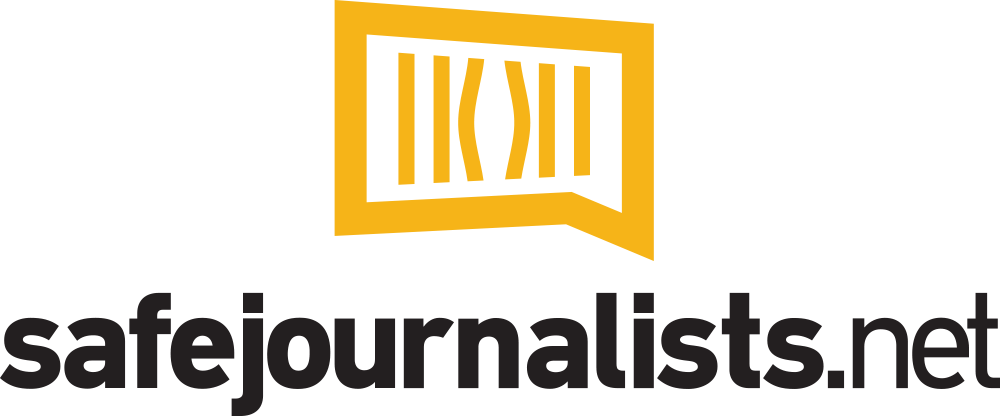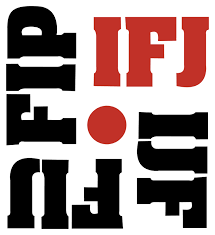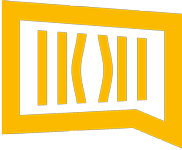A small group of American journalism students visited the country to examine the state of press freedoms there
This story was produced as part of Washington State University’s Backpack Journalism Program. In March, four students and professor Alison Boggs spent a week in Serbia visiting multiple independent journalism outlets, media watchdog organizations, research agencies, and journalism professors and students to understand the current state of press freedoms in that country.
BELGRADE, SERBIA — In April 2020, Serbian journalist Ana Lalic learned of a shortage of protective equipment for hospital staff working in COVID-19 wards. Despite the Serbian government’s restrictions on reporting on COVID-19, Lalic felt she had to inform the public.
“We were concerned about the possibility of doctors and nurses contracting the virus, which would have a greater effect as there will be no one to treat the public,” said Lalic, a veteran journalist.
Two hours after her article was published, the hospital denied her reporting. That night, six police officers showed up at her door with an arrest warrant, Lalic said. She was charged with “disseminating false information and causing panic,” her cell phone and laptop were seized, and authorities took her into custody. She was released two days later and the charges were eventually dropped, she said.
Lalic’s story is one of many that demonstrate the challenges of working in a country where independent journalists are harassed and subjected to surveillance and smear campaigns, including online verbal insults, death threats and property crimes. In April, Reporters Without Borders urged Serbian officials to strengthen press freedom and protect journalists from frivolous lawsuits. Within the country, the number of physical and verbal attacks on journalists has grown dramatically in recent years, according to the Independent Journalists Association of Serbia, which promotes a free and independent press.
Many of those attacks focus on the country’s female journalists, who often lead independent investigative news outlets.
“These journalists are at the forefront of the struggle for media freedoms here in Serbia,” said Igor Ispanovic, media support officer and project manager for media at the Independent Journalists Association of Vojvodina. “But even when they experience harassment, I think they’re doing brilliant in managing the ways to repel it, and actually go beyond or transcend it, and not respond in a similar manner.”
In the 1990s, the government of Serbia, a landlocked country in southeastern and central Europe, controlled state radio and television, battling against a small group of independent news outlets and journalists. Today, pro-government media outlets receive the bulk of government funding that dominates the Serbia press scene, disseminating mis- and disinformation to support the government’s political agenda, according to multiple interviews conducted this spring with independent journalists and press activists.
The ruling Serbian Progressive Party has gradually undermined political rights and civil liberties, according to a 2022 report by Freedom House, a nonprofit think tank based in Washington, D.C. The report found that independent media, opposition groups, and civil society organizations are increasingly under attack.
Much of the funding for independent media groups in Serbia is foreign aid from Western Europe or the United States, such as grants from the State Department, USAID, nongovernmental organizations that support press freedom or international foundations. That funding has led to accusations that independent journalists are foreign mercenaries and domestic terrorists, numerous journalists said.
Pro-government tabloids and government officials have also created an environment where smear campaigns and verbal harassment against journalists have become common, resulting in psychological issues such as fear, anxiety and stress for these reporters.
For Lalic, the arrest was just the beginning of the psychological distress that was to come. Although the charges against her were dropped, Lalic said she was vilified as a traitor and hater of the country by the president and prime minister.
“I was all over the tabloid newspapers,” said Lalic. “I received different threats. And one night, somebody entered my parking lot and cut the tires on my car.”
In 2017, investigative reporter Dragana Peco of Crime and Corruption Reporting Network (or KRIK), an independent investigative portal in Serbia, was targeted when her apartment was burglarized and ransacked. The culprit went through her belongings without taking anything, despite the presence of valuable items. She reported the crime, but no one was caught, and the case was closed.
In a separate incident in June 2020, Bojana Pavlovic, another female journalist at KRIK, was stopped and physically attacked in the street by men in civilian clothing after she took photos of the president’s son, Danilo Vucic. According to an article by KRIK, the son was in a coffee shop sitting in the company of a group known for criminal activities. Her attackers claimed to be police officers. They harassed her, took her phone and instructed her to delete the photos. KRIK reported her attack and demanded an investigation, but no one was ever charged.
“We have this corrupt government that starts campaigns against us,” said Marija Vucic, a journalist and fact-checker at KRIK. “They have many journalists on their side. So it’s confusing the journalism environment, and all that makes people not believe or appreciate us.”
The media landscape in Serbia is “disastrous,” Lalic said. It is deeply polarized with the presence of pro-government media and independent outlets. Critical or unflattering reporting on the government or its officials leads to an attack by pro-government media outlets, Vucic said.
The Serbian government plays a substantial role and influence in the media business, according to a report by Reporters Without Borders from 2017, the most recent year the information was available. Not only do most media outlets rely on government funding, but the government also applies pressure to the media market by selectively enforcing tax laws, sometimes freezing the bank accounts of newspapers critical of the government.
This spring, Reporters Without Borders urged elected officials to create policies that would promote press freedom and protect journalists. Reporters Without Borders released the report on the anniversary of the assassination of investigative journalist Slavko Curuvija. It submitted 10 recommendations to the elected officials, including one that calls for distributing government funds to the media in a fair and equitable manner.
On a local level, nearly 99% of the media are connected to the government because they depend on local budgets for survival, according to Vucic.
Vucic herself is no stranger to online attacks, including death threats on social media.
“When I work on some investigation, I don’t feel so safe,” Vucic said. “For example, in those few weeks of working and after publishing, I feel like maybe I’m truly endangered. I’m always suspicious of someone following me or if I’m under some surveillance.”
Lalic sees these attacks as a means for the government to humiliate and shame female journalists for working in a traditionally male profession.
Vucic of KRIK is more blunt. She said that when female journalists publish something critical, they are demeaned on social media as “sluts.”
“When you attack a female journalist, you are going to say that she is a whore, she’s stupid, a garbage, or that she looks like a horse,” Vucic said.
KRIK has established a fund for journalists to receive counseling for one or two months. The Independent Journalists Association of Vojvodina in Novi Sad also provides free psychological support to its members based on funds received through grants.
In a 2020 survey among female journalists conducted by the Independent Journalists Association of Serbia, more than 36% of respondents reported that they have been victims of online threats or have “had their safety at risk in a similar way” in the last five years. In many of those cases, “there has been sexual harassment and danger to safety and life.”
Such attacks are sometimes extended to their families. In 2019, a man pleaded guilty to making online death threats against a female journalist, Tatjana Vojtehovski, and her daughter, according to an article by the Balkan Investigative Reporting Network. He was sentenced to eight months of house arrest.
Vojtehovski’s case is one of the very few that get attention as most of these reported harassments generally go unpunished, giving more leeway to perpetrators of such crimes. Attacks on female journalists are often not reported.
Ispanovic said because female journalists are increasingly leading investigative work, they often experience attacks much more than their male counterparts. When government officials notice growing opposition, they are more likely to become more active in their harassment of journalists, Ispanovic said.
“There’s this sort of patronizing aspect to the harassment,” he said. “You have men who are in positions of power within the established structure of the system, while on the other hand, most journalists that do investigative work and are at the forefront are women.”
As for Lalic, she vowed to continue to do what she loves, but has made changes to ensure her safety. For the past two years, she has hired security guards who accompany her everywhere. She now always carries a panic taser and avoids walking alone.
“Investigative journalists are women in Serbia nowadays. And that’s something that I’m really proud of,” Lalic said. “It’s better to be paranoid when you know that we live in a society where physical violence is excused and welcomed unsolicited in some cases.”








